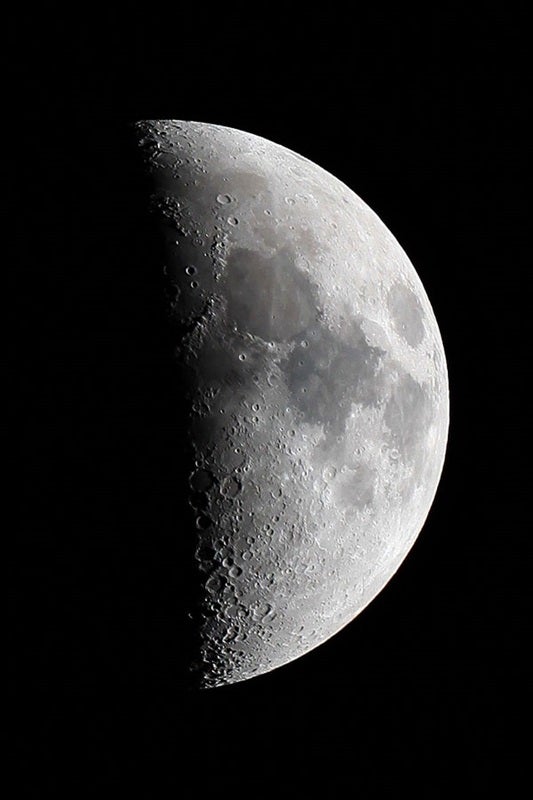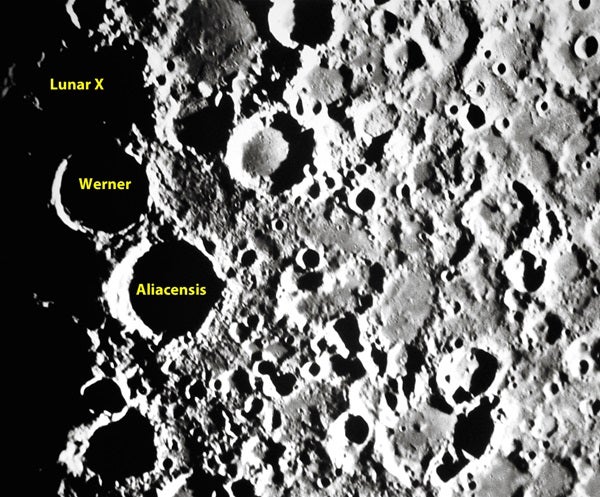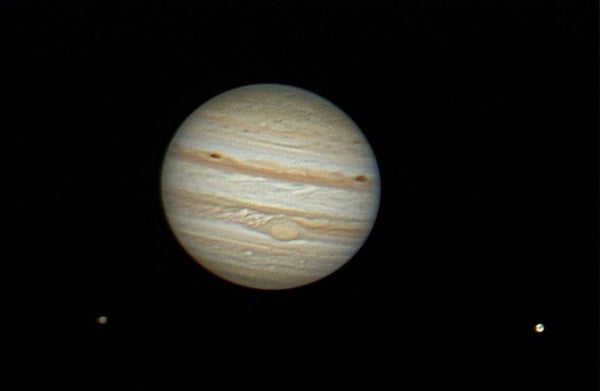Images of our lone natural satellite never fail to amaze either amateur astronomers or the general public. The large, dark, lava-filled maria contrast with the brighter highland regions, and everywhere it seems craters lie atop craters. Be sure to look for the First Quarter Moon the evening of February 12; the next evening, a slightly fatter Moon appears in front of the Hyades star cluster.
For those of you in the Southern Hemisphere, today marks the peak of the annual Alpha Centaurid meteor shower. And with the Moon out of the sky, viewing conditions should be near perfect from late evening until morning twilight begins. The shower’s radiant — the point from which the meteors appear to originate — lies among the background stars of Centaurus (although, oddly enough, closer to 1st-magnitude Beta [β] Centauri than to its brighter neighbor, Alpha [α] Centauri). The shower typically produces about 6 meteors per hour at its peak, although observers have reported between 20 and 30 per hour in a couple of years. The meteors tend to be bright and often leave persistent trains.
Saturday, February 9
A pair of fine binocular objects are on display tonight. The open star clusters M46 and M47 reside about a degree apart in the northwestern corner of the constellation Puppis the Stern. The two lie about 12° east-northeast of the sky’s brightest star, Sirius. The western cluster, M47, glows at 4th magnitude and appears as a fuzzy patch sprinkled with several pinpoint stars. Sixth-magnitude M46 shows up as a hazy collection of faint stars that is hard to resolve under most conditions. Although it contains nearly twice as many stars as M47, M46 appears fainter and fuzzier because it lies some three times farther from Earth.
Sunday, February 10
Mars continues to shine brightly on February evenings. Look for the Red Planet halfway to the zenith in the southwestern sky as darkness falls. The world glows at magnitude 1.0 against the much dimmer stars of Pisces the Fish. Tonight, Mars sits 6° to the right of the waxing crescent Moon. A telescope reveals the planet’s 6″-diameter disk, but you likely won’t see any surface details.
Venus appears brilliant in the southeast before dawn. It reached greatest western elongation in early January and continues to dominate the predawn sky. The inner world shines at magnitude –4.2, nearly 10 times brighter than the second-brightest planet, Jupiter. Venus rises by 4:30 a.m. local time and stands 15° high an hour before the Sun comes up. The planet lies among the background stars of Sagittarius, close to two of the Archer’s finest deep-sky objects. Both this morning and tomorrow morning, open star cluster M25 lies 2° north of Venus and globular cluster M22 resides 3° south of the planet. All three objects fit nicely in the field of 7×50 binoculars. Through a telescope, Venus shows a disk that spans 18″ and appears two-thirds lit.
If you grab a telescope and target the Moon this evening, you can watch a few points of light evolve into a prominent letter X. Focus on a spot along the terminator — the dividing line between lunar day and night — almost halfway from the equator to the south pole. Use the twin craters Aliacensis and Werner as guides to the Lunar X, which lies just to their northwest. In the image above, the X is just beginning to show. Although the X is just a chance alignment of light and shadow as the Sun rises over a group of crater walls, it’s fun to see because it triggers our brain’s pattern-recognition ability.
Tuesday, February 12
You can find the First Quarter Moon high in the south as darkness falls, then watch as it sinks toward the western horizon throughout the evening hours. Our satellite officially reaches First Quarter phase at 5:26 p.m. EST. The Moon lies in western Taurus, some 10° south of the Pleiades star cluster (M45).
You can use Mars as a guide to find Uranus through binoculars or a telescope tonight and tomorrow night. Both planets lie on the border between the constellations Pisces the Fish and Aries the Ram. This evening, Mars stands 1.0° north-northwest of its neighbor; tomorrow night, the Red Planet lies 1.1° due north of its neighbor. Both worlds show up nicely through binoculars or a telescope at low power, though only a scope reveals the planets’ disks. Mars measures 5.7″ across while Uranus, despite lying 12 times farther away, spans 3.5″. Neither object shows much, if any, detail, but the ruddy color of Mars contrasts nicely with the blue-green of Uranus.
Wednesday, February 13
The waxing gibbous Moon marches eastward relative to the background stars of Taurus this evening, passing through the conspicuous Hyades star cluster. Although everyone in North America will have wonderful views of our satellite’s journey, those farther east will see Luna centered in the V-shaped cluster shortly after darkness falls. Binoculars should provide the best views of this beautiful encounter.
Thursday, February 14
One of the sky’s most familiar constellations rules January’s sky from dusk until after midnight local time. Orion the Hunter appears conspicuous in the southeast as darkness falls and climbs highest in the south around 8 p.m. It then stands about halfway to the zenith from mid-northern latitudes. The waxing gibbous Moon stands above Orion this evening, while the night sky’s brightest star, Sirius, trails about an hour behind the Hunter.
Friday, February 15
Mercury returns to the evening sky in mid-February. This evening, it appears 5° high in the west-southwest 30 minutes after sunset. It shines at magnitude –1.1, bright enough to show up against the twilight glow. (If you don’t see Mercury right away, binoculars will bring it into view.) A telescope reveals the planet’s disk, which spans 5.6″ and appears nearly full. By the end of February, the innermost planet will be much easier to see as it climbs 11° above the western horizon a half-hour after the Sun goes down.
Jupiter typically shows lots of detail. In this image, the Great Red Spot stands out along with several dark belts and bright zones that run parallel to the gas giant’s equator. The imager also captured details on two of Jupiter’s moons — Callisto at the lower left and Ganymede at lower right.
Jupiter continues to grow more prominent in the southeastern sky before dawn. The giant planet rises around 3 a.m. local time and climbs 20° high by the first hint of twilight. Jupiter gleams at magnitude –2.0, though it still pales in comparison to Venus, which rises 100 minutes after the giant world. A telescope shows Jupiter’s 35″-diameter disk and at least two conspicuous cloud belts as well as the planet’s four bright Galilean satellites. In an unusual alignment, all four moons lie east of the gas giant this morning.
Sunday, February 17
If you thought the midweek conjunction of Mars and Uranus was special, wait until you see Venus and Saturn team up before dawn. The two bright planets lie 1.6° apart this morning and will approach within 1.1° of each other tomorrow. Venus shines at magnitude –4.2, some 80 times brighter than magnitude 0.6 Saturn. If you look carefully, you’ll also see the 3rd-magnitude star Pi (π) Sagittarii between the two. Use your naked eye or binoculars to view the stunning scene.












